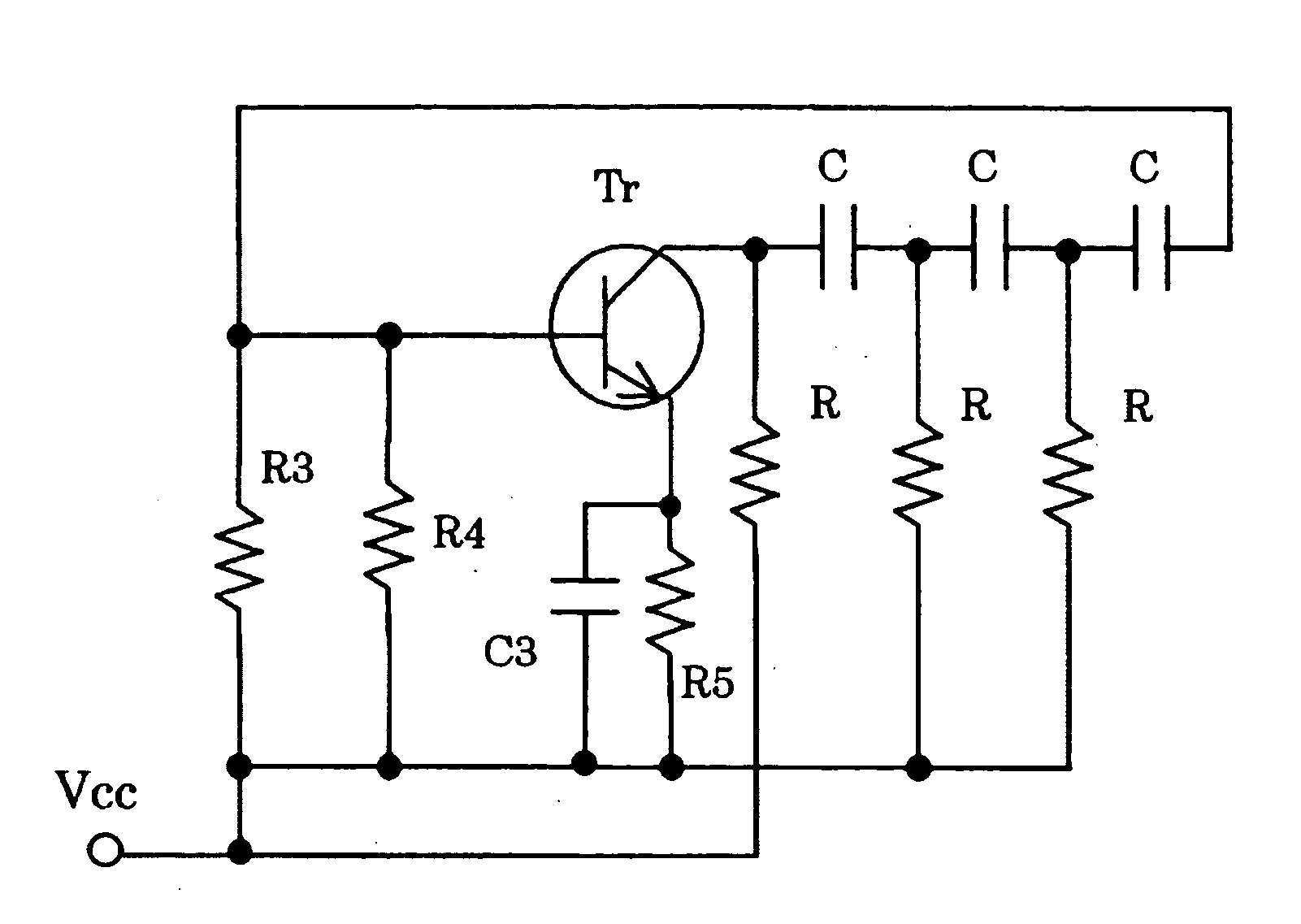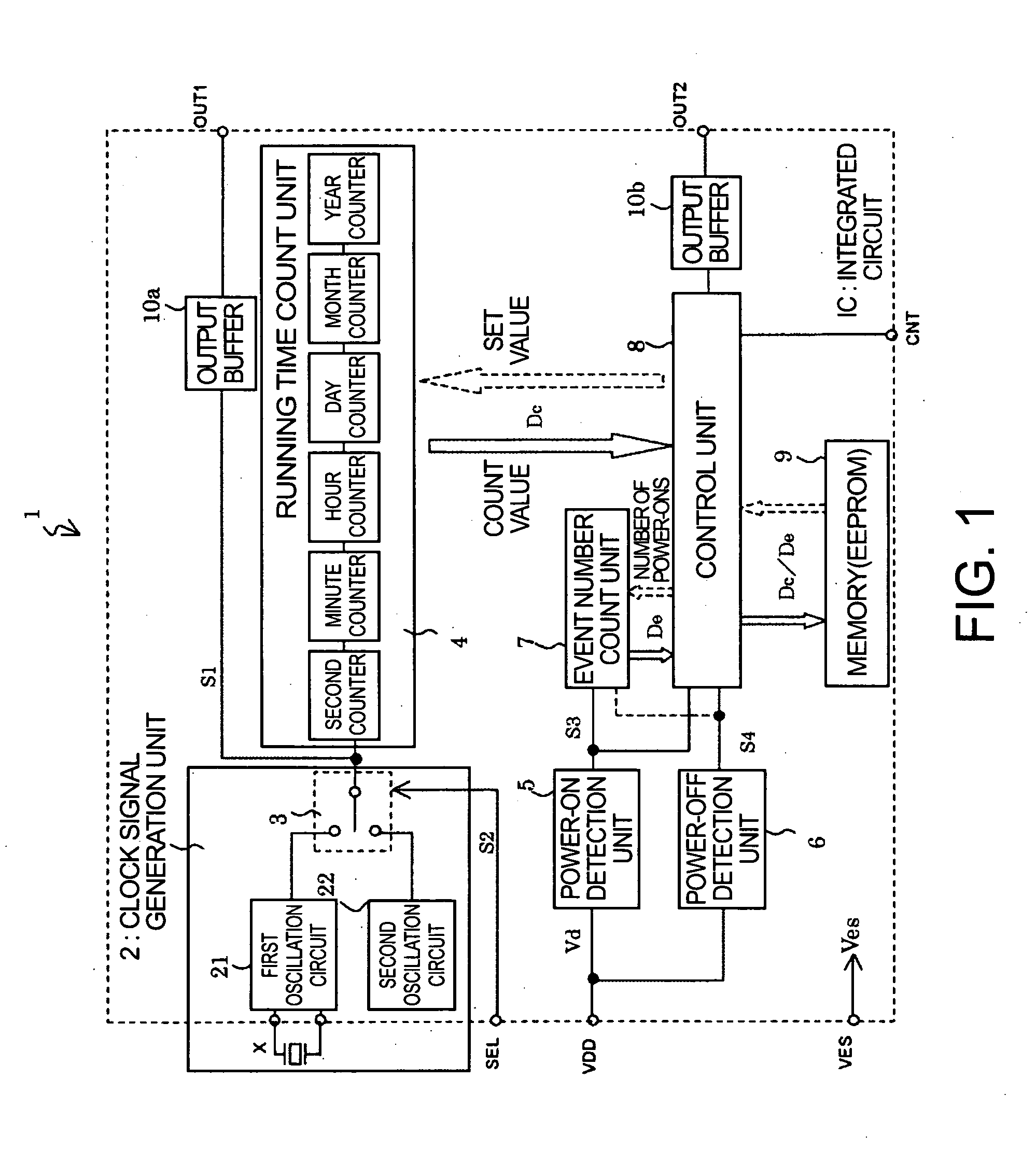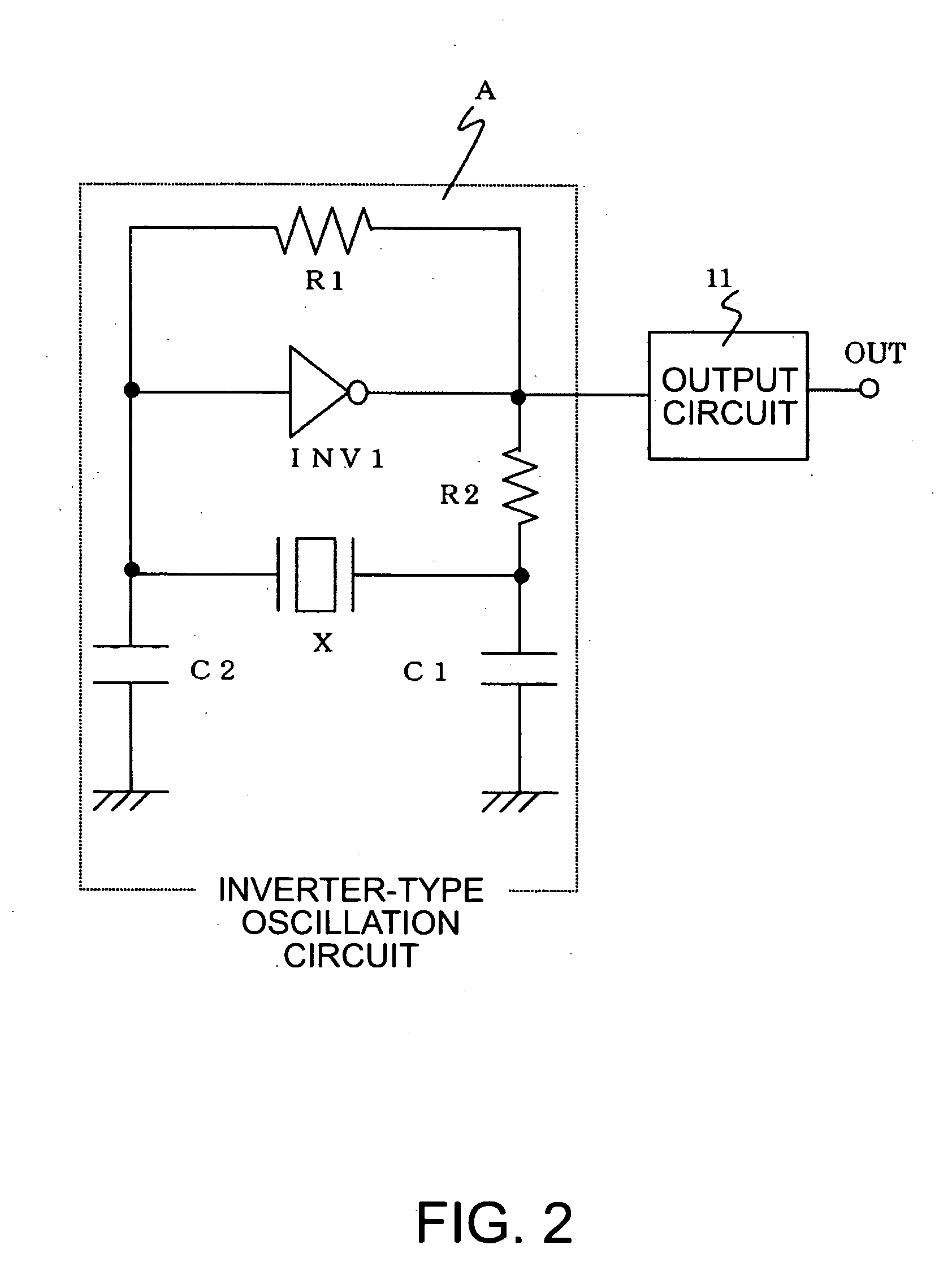Oscillator and electronic apparatus using the same
a technology applied in the field of oscillator and electronic equipment using the same, can solve the problems of difficult acquisition of landfill space, affecting the earth's environment, and expensive products such as cpus being recycled, and achieve the effect of low power consumption of electronic equipmen
- Summary
- Abstract
- Description
- Claims
- Application Information
AI Technical Summary
Benefits of technology
Problems solved by technology
Method used
Image
Examples
first embodiment
(1-2) Operation of First Embodiment
[0071] Next, the operation of the first embodiment will be described with reference to FIGS. 6 and 7.
embodiment 1
[0072]FIG. 6 is a flowchart for explaining the operation of the Embodiment 1.
[0073] In Embodiment 1, the count operation on the running time and the number of power-ons of an electronic apparatus or an electronic part starts from the initial value of 0 at every power-on, and the running time and the number of power-ons at a power-off time are added to the accumulated running time and the accumulated number of power-ons stored in the memory 9, respectively. Next, the addition results are stored as a new accumulated running time and the accumulated number of power-ons in the memory 9.
[0074] In addition, Embodiment 1 is described based on an electronic apparatus where the power source is powered-on / off within the working time in one day.
[0075] In synchronization with the start of work, the user powers on and drives the electronic apparatus. The first oscillation circuit 21 is selected by the oscillation circuit selection unit 3 in accordance with the external selection signal S2 (St...
embodiment 2
[0079] Next, operations of another example, Embodiment 2, will be described with reference to FIG. 7.
[0080]FIG. 7 is a flowchart for explaining the operation of Embodiment 2.
[0081] In Embodiment 2, at a power-on time of the electronic apparatus, the accumulated running time and the accumulated number of power-ons stored in the memory are set to the running time count unit 4 and the event number count unit 7, respectively, and the count operation starts from the respective initial values, and the running time and the number of power-ons accumulated up to a power-off time are stored in the memory.
[0082] When the user powers on and drives the electronic apparatus, the first oscillation circuit 21 is selected by the oscillation circuit selection unit 3 in accordance with the external selection signal S2 (Step ST21). Next, the power-on detection unit 5 detects the power-on and outputs the power-on detection signal S3 to the event number count unit 7 and the control unit 8 (Step ST22)....
PUM
 Login to View More
Login to View More Abstract
Description
Claims
Application Information
 Login to View More
Login to View More - R&D
- Intellectual Property
- Life Sciences
- Materials
- Tech Scout
- Unparalleled Data Quality
- Higher Quality Content
- 60% Fewer Hallucinations
Browse by: Latest US Patents, China's latest patents, Technical Efficacy Thesaurus, Application Domain, Technology Topic, Popular Technical Reports.
© 2025 PatSnap. All rights reserved.Legal|Privacy policy|Modern Slavery Act Transparency Statement|Sitemap|About US| Contact US: help@patsnap.com



